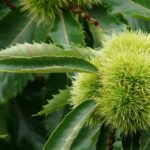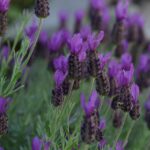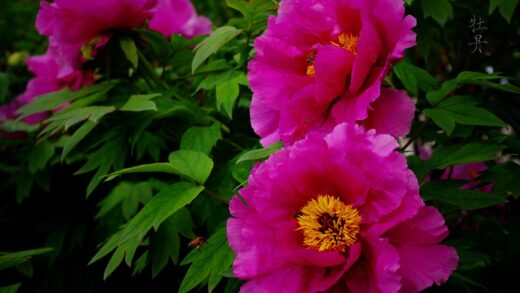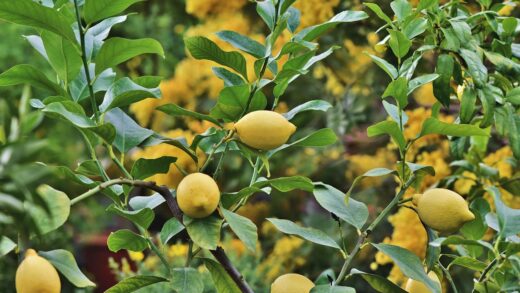The beautiful bleeding heart is a plant that originates from the moist, cool woodlands of North America, and this native habitat provides the primary clues to its water requirements in a garden setting. This perennial thrives in soil that is kept consistently and evenly moist, particularly during its active growing and flowering period in the spring and early summer. The goal of any irrigation strategy should be to replicate the conditions of a damp forest floor, which is rich in moisture but also well-aerated and not stagnant. Inadequate water is one of the most common reasons for this plant to fail, leading to wilting, yellowing leaves, and a shortened lifespan.
The demand for water is at its peak from the moment new growth emerges in the spring until the plant begins to enter its natural dormancy period after flowering. During this phase, the plant is actively producing its lush, fern-like foliage and its iconic heart-shaped flowers, processes that require a significant amount of water. If the soil is allowed to dry out completely during this critical time, the plant may prematurely enter dormancy, with the foliage dying back much earlier than it normally would. Therefore, regular monitoring of soil moisture is a fundamental aspect of its care.
It is also important to understand the relationship between water and soil type. The ideal loamy soil holds moisture well while allowing any excess to drain away, creating the perfect balance. In contrast, sandy soils drain very quickly and will require more frequent watering to maintain the necessary level of moisture for the plant’s roots. On the other hand, heavy clay soils can retain too much water, which can lead to a lack of oxygen in the root zone and increase the risk of root rot, a fatal condition for the beautiful bleeding heart.
The concept of “consistent moisture” does not mean the soil should be constantly saturated or waterlogged. Instead, it implies that the soil should not be allowed to swing between periods of extreme wetness and prolonged dryness. The aim is to maintain a state of being damp, much like a well-wrung-out sponge. Achieving this balance requires careful observation and adjusting your watering practices based on the weather, the maturity of the plant, and the specific conditions of your garden’s microclimate.
Best practices for irrigation
When it comes to watering the beautiful bleeding heart, the technique you use is just as important as the frequency. The most effective method is to provide deep, thorough soakings rather than frequent, shallow sprinklings. Deep watering encourages the plant to develop a more extensive and resilient root system that can access moisture from a larger volume of soil. This makes the plant more drought-tolerant and less dependent on constant surface watering. To water deeply, apply water slowly at the base of the plant, allowing it to soak into the ground rather than running off the surface.
More articles on this topic
The best time of day to water is in the early morning. Watering at this time allows the foliage to dry completely before nightfall, which is a crucial practice for preventing the development and spread of fungal diseases like powdery mildew, which can thrive on damp leaves. Morning watering also ensures that the plant is well-hydrated before the heat of the day, reducing the risk of wilting and heat stress. Avoid watering in the middle of a hot, sunny day, as much of the water can be lost to evaporation before it even reaches the root zone.
The source of the water can also be a factor. While tap water is generally acceptable, rainwater is an excellent, naturally soft, and chemical-free option for irrigating your garden plants. If you have the means, setting up a rain barrel to collect runoff from your roof can provide a sustainable and high-quality water source for your beautiful bleeding heart and other garden plants. This practice is not only beneficial for the plants but also for the environment.
A simple but effective way to determine if it is time to water is to use the finger test. Insert your finger into the soil near the base of the plant to a depth of about one to two inches. If the soil feels dry at that depth, it is a clear indication that it is time to provide a thorough watering. Over time, you will develop a good sense of how often your plant needs water based on the specific conditions in your garden, but this hands-on method remains one of the most reliable ways to assess moisture levels.
The role of soil and mulch
The type of soil your beautiful bleeding heart is planted in plays a pivotal role in how it uses and retains water, directly influencing your irrigation schedule. The ideal soil is one that is rich in organic matter. Amending your soil with compost, leaf mold, or other decomposed organic material dramatically improves its water-holding capacity. These materials act like a sponge, soaking up water and releasing it slowly to the plant’s roots as needed. This creates a buffer that helps to maintain consistent moisture levels and reduces the frequency with which you need to water.
More articles on this topic
In addition to improving water retention, organic matter also enhances soil structure, which is crucial for preventing waterlogged conditions. In heavy clay soils, organic amendments help to create aggregates, improving drainage and aeration. In sandy soils, they help to bind loose particles together, slowing down the rate at which water drains through. Therefore, preparing the soil properly before planting is a proactive step that sets the stage for a much easier and more effective watering routine throughout the plant’s life.
Applying a layer of organic mulch around the base of the plant is another highly effective strategy for managing soil moisture. A two- to three-inch layer of mulch, such as shredded bark, wood chips, or shredded leaves, acts as a barrier on the soil surface. This barrier significantly reduces the rate of evaporation, keeping the soil cooler and moister for longer periods. This means you will not have to water as often, even during warm or windy weather.
When applying mulch, it is important to keep it a few inches away from the crown of the plant. Piling mulch directly against the stems can trap excess moisture and create an environment that is conducive to rot and fungal diseases. A properly applied layer of mulch not only conserves water but also helps to suppress weed growth, which means your beautiful bleeding heart will not have to compete with other plants for available moisture and nutrients.
Adjusting watering for seasons and dormancy
The water needs of the beautiful bleeding heart are not static; they change significantly throughout the year in response to the plant’s natural growth cycle. It is essential to adapt your watering practices to align with these seasonal changes. The highest demand for water is in the spring, when the plant is rapidly putting on new growth and producing flowers. During this period, especially if rainfall is scarce, you will need to be vigilant about providing supplemental water to keep the soil consistently moist.
As summer progresses and the plant finishes its flowering cycle, it begins to prepare for dormancy. This is a natural process where the foliage starts to turn yellow and die back as the plant transfers its energy reserves to its underground rhizomes. During this transition, you should gradually reduce the frequency of watering. The plant’s water uptake decreases significantly as it becomes dormant, and continuing to water at the same rate as you did in the spring can lead to oversaturation and root rot.
Once the plant is fully dormant, with all the top growth having died back, it requires very little water. In most climates, natural rainfall will be sufficient to keep the dormant roots from completely drying out. You should only consider providing a small amount of water during extended periods of drought in the late summer or autumn. The goal during dormancy is simply to prevent the soil from becoming bone dry, not to keep it actively moist.
When spring arrives and you see the first signs of new growth poking through the soil, that is your cue to resume a more regular watering schedule. As the shoots emerge and begin to grow, gradually increase the amount and frequency of watering to meet the plant’s accelerating needs. This careful adjustment of your irrigation practices in harmony with the seasons is key to the long-term health and success of your beautiful bleeding heart.
Signs of overwatering and underwatering
Recognizing the signs of improper watering is a crucial skill for any gardener, as it allows for timely correction before significant damage occurs. Underwatering is often the easier of the two to identify. The most obvious symptoms include wilting foliage, especially during the warmer parts of the day, and leaves that appear dull or faded. If the lack of water is prolonged, the edges of the leaves may turn brown and crispy, and the plant may drop its flower buds or have a much shorter blooming period before it prematurely enters dormancy.
Conversely, overwatering can be more insidious, and its symptoms can sometimes be mistaken for those of underwatering. One of the primary signs of too much water is yellowing leaves, particularly the lower ones, which may turn a mushy brown at the base. The plant may also appear wilted, not because of a lack of water, but because the waterlogged soil has deprived the roots of oxygen, causing them to rot and lose their ability to absorb water and nutrients. A perpetually wet or swampy soil surface around the plant is a clear indicator of an overwatering issue.
To differentiate between the two, always check the condition of the soil. If the plant is wilted but the soil is dry several inches down, the problem is underwatering. If the plant is wilted and the soil is soggy, overwatering is the culprit. Another sign of overwatering can be a general lack of vigor and stunted growth, as the compromised root system is unable to support the plant’s development. In severe cases, you may notice a foul odor coming from the soil, which is a sign of anaerobic decomposition and advanced root rot.
If you suspect you have overwatered your beautiful bleeding heart, it is essential to allow the soil to dry out more than usual before watering again. For container-grown plants, ensure the pot has adequate drainage holes. In garden beds, improving soil drainage by incorporating organic matter is the best long-term solution. By learning to read the subtle cues your plant provides, you can fine-tune your watering habits to provide the perfect amount of moisture it needs to thrive.


















